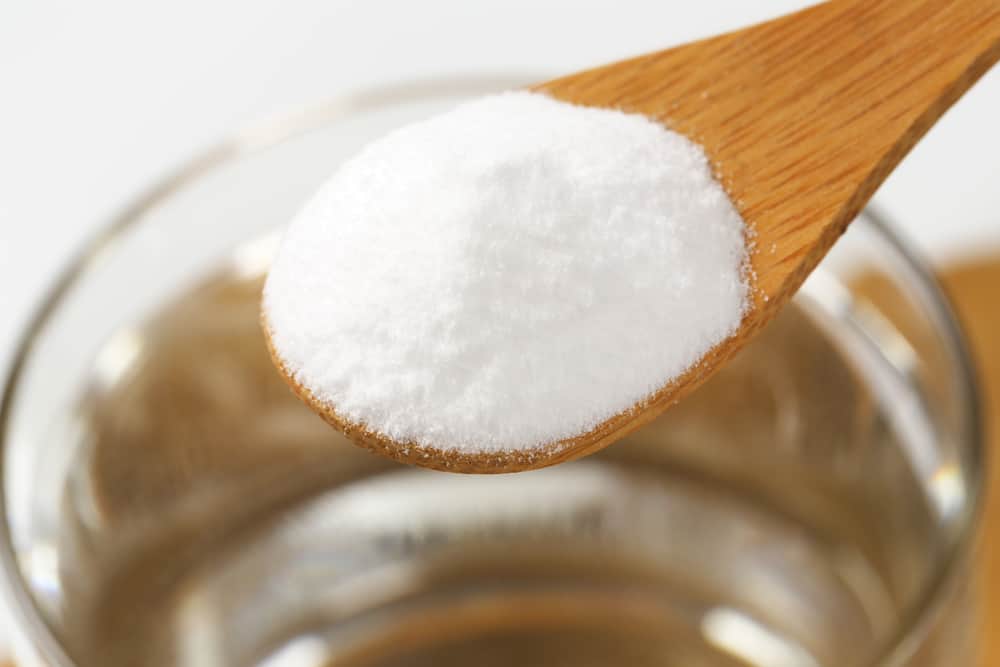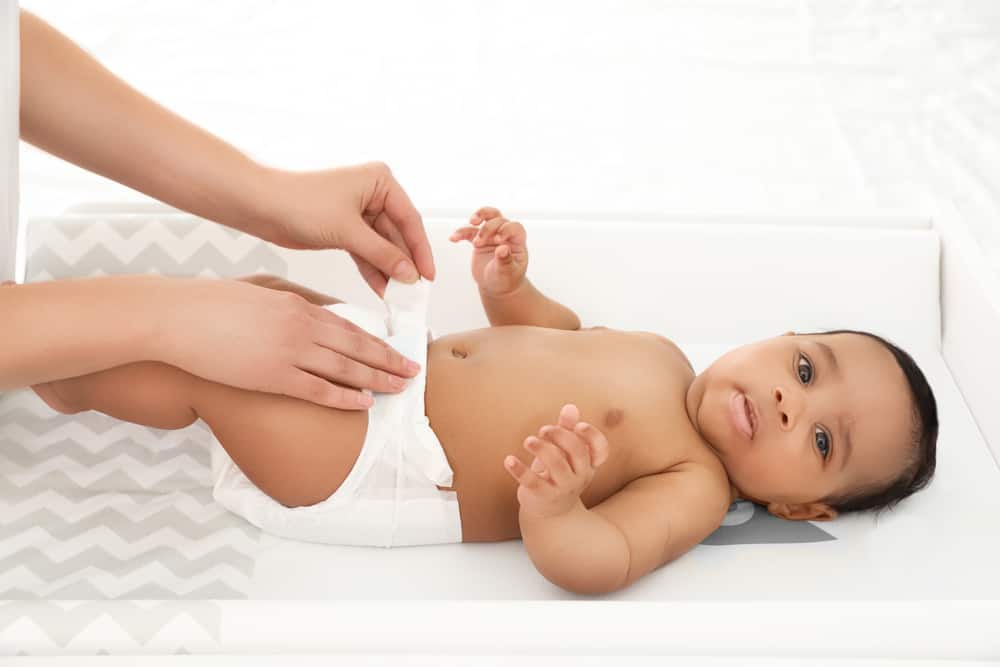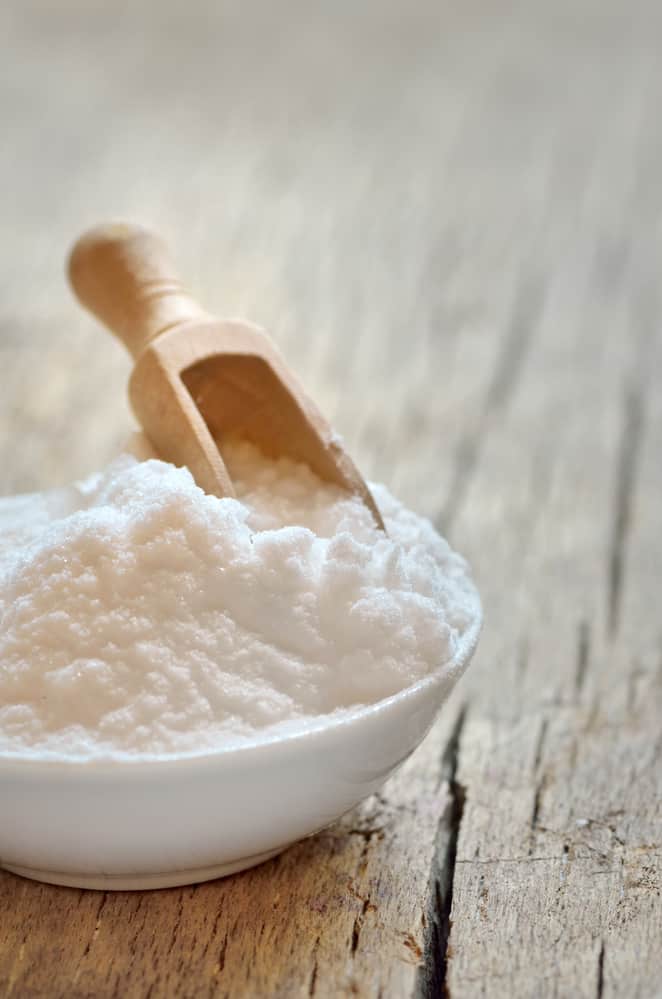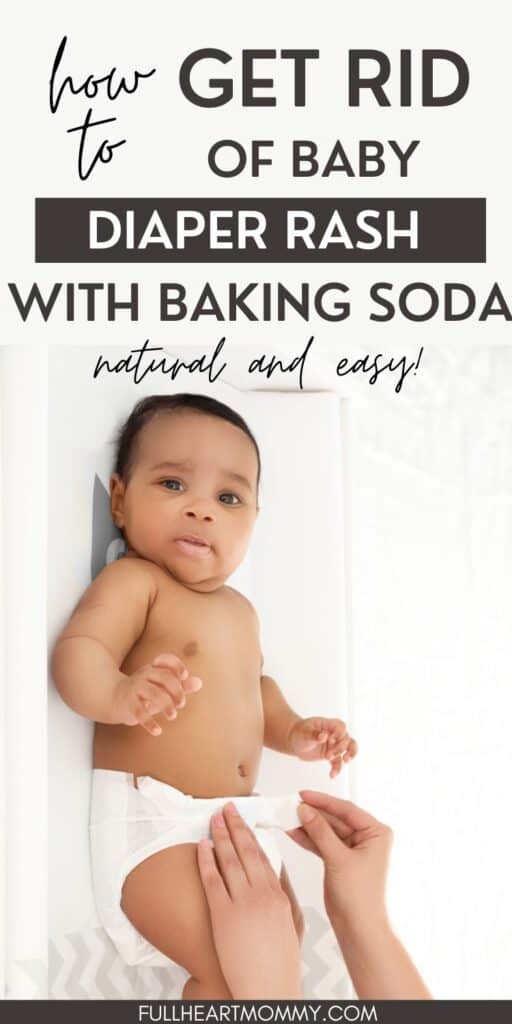If your baby is suffering from a pesky diaper rash, you’re probably looking for quick and effective ways to soothe their skin. You’ve likely heard of using baking soda baths as a natural remedy. It’s touted by many new parents as an effective method for combating those stubborn rashes on your baby’s bottom.
Baking soda, or sodium bicarbonate, can help alleviate the symptoms of diaper rash due to its anti-inflammatory properties. By adding a small amount to lukewarm bath water, it can bring relief to irritated skin and accelerate healing. Plus, it’s an affordable and accessible solution that could be right there in your kitchen cupboard.
However, before you run the bath and reach for the baking soda, it’s crucial to understand how this treatment works and when it should be used—because while it might work wonders on some rashes, others may need a different approach. So let’s explore the world of baking soda baths for diaper rash.
By the end of this. you will know when and how to give your baby a warm baking soda bath for diaper rash.

Diaper rash symptoms are usually pretty straightforward. If you notice bright red skin on your baby’s bottom, chances are it’s diaper rash. It often appears in the area covered by disposable or cloth diapers but can also spread to other areas if not treated promptly.
The affected area may appear puffy and feel warm when touched. Sometimes, open sores or small blisters may develop in severe cases.
You may notice red, inflamed skin on your baby’s bottom, genitals, and thigh area. Your baby will probably be super fussy or cry a lot during diaper changes.
So why does diaper rash occur? The most common reason is prolonged exposure to a wet or dirty diaper, which causes skin irritation. This irritation worsens with the rubbing and chafing from diapers, leading to painful rashes.
In some instances, new foods in your child’s diet can change their bowel movement consistency or frequency leading to more frequent rashes. Yeast infections—yes, babies can get them too—are another common cause of diaper rashes because yeast thrives in warm and moist environments like inside a diaper!
Sometimes even certain types of laundry detergents used for washing cloth diapers could cause an allergic reaction resulting in a rash on your baby’s sensitive skin.
Luckily, there are a ton of simple remedies for this including air drying, changing your baby’s diaper more frequently, diaper cream, or ointment. There’s also a natural solution of baking soda bath for diaper rash!
You probably already have some on hand, so let’s learn how to use this easy, at home treatment.
How Can Baking Soda Help Diaper Rash?
Baking soda is a natural product that can help to soothe and heal diaper rash. When added to a warm bath, it can help to relieve pain and itching.
The Benefits of Baking Soda For Diaper Rash
Baking soda is easy to find, it should be readily available in your local grocery store.
Baking soda is very inexpensive.
It’s an easy solution, likely you are going to be bathing your baby anyway so its very quick to add this into your bath time routine.
Baking soda may be a better alternative for babies with sensitive skin, because, unlike other creams or ointments with unknown ingredients or additives, this solution only has one ingredient!
Sometimes babies will have a diaper rash while teething, and this can be a soothing solution for them.

How To Do A Baking Soda Bath For Diaper Rash
Preparing a baking soda bath might sound like rocket science, but trust us, it’s as easy as pie! Here’s a simple step-by-step guide:
- Fill your baby’s bathtub with lukewarm water, avoid using very hot water.
- Add 2 tablespoons of baking soda per gallon of warm bath water.
- Mix well until you no longer see any clumps.
- Gently place your infant in the tub and let them soak for about 10 minutes.
Be sure to focus on soaking the affected area – typically, this is the baby’s bottom where diaper rashes usually occur.
If desired, you could consider adding natural ingredients such as coconut oil or drops of essential oils for extra soothing properties. However, do remember that any additional items should be used with caution and after conducting a patch skin test. This is because babies’ skin can react differently to these substances.
After bath time, remember to completely dry off your little one before popping on a fresh new diaper.
I do have a couple of tips and tricks that will make giving them a bath easier if your baby hates bath time.
Safety Measures and Considerations for Baking Soda Bath
While baking soda baths are generally safe, there are some precautions you need to take:
- Always dilute baking soda with water before applying it directly onto your child’s skin.
- If your child shows signs of sensitivity after using baking soda (like dry skin or increased redness), stop its use immediately.
- Always remember that while natural remedies can be helpful, severe diaper rash should always warrant professional medical advice from your child’s pediatrician.
It may be tempting to add more baking soda into the bath because you want to give your baby relief as quickly as possible but don’t.
Too much baking soda can be absorbed into the skin and cause an imbalance between sodium and potassium levels in your baby’s blood. This is called alkalosis and can lead to dehydration.
If you are concerned about your skin sensitivity and baking soda, start by adding a small dose of baking soda and working your way up to 2 tablespoons.
If your baby has other symptoms besides a diaper rash like fever, diarrhea, vomiting please notify your child’s doctor or medical provider right away!
How Fast Do Baking Soda Baths Treat Diaper Rash?
When used correctly, baking soda baths can help in treating diaper rash by neutralizing acids on the skin, reducing inflammation, and relieving itching. But how fast can you expect results?
Immediate Relief:
Baking soda baths can offer immediate comfort. As the baby sits in the mild alkaline solution, you may notice a reduction in redness and inflammation. The gentle soothing properties of the baking soda can provide instant relief from itching and discomfort, making your little one feel more comfortable post-bath.
Long-term Results:
For noticeable healing, it might take a bit longer. Many parents report a significant reduction in diaper rash severity within 24 to 48 hours after using a baking soda bath. However, the effectiveness and speed at which diaper rash heals can vary based on:
- The severity of the Rash: Milder rashes might heal quicker than severe or infected rashes.
- Frequency of Baths: While daily baking soda baths can be helpful, it’s essential not to overdo it, as too much can dry out the baby’s skin.
- Aftercare: How you care for your baby’s bottom post-bath plays a role. Ensure the area is dried gently but thoroughly and consider using a gentle moisturizing barrier cream if appropriate.
- Underlying Causes: If the diaper rash is due to an underlying issue, like a yeast infection, a simple baking soda bath might not be enough, and additional treatment might be required.
Can You Sprinkle Baking Soda On Diaper Rash?
Sprinkling baking soda directly onto your baby’s sensitive skin, especially on irritated areas, is not recommended. Direct application can lead to increased dryness or even worsen the irritation. The grainy texture of baking soda can be abrasive and might be too harsh on already inflamed skin.
If you’re looking to benefit from baking soda’s properties without giving your baby a full bath, you can opt for a milder approach, by making a baking soda paste for diaper rash:
Preparation: Mix 1 teaspoon of baking soda with enough water in a cup to create a smooth paste.
Application: Soak a soft cloth or towel in the mixture and gently apply it to the affected area. This ensures that the baking soda is diluted enough to be gentle on the skin while still providing its soothing properties.
Rinsing: After allowing the mixture to sit for a few minutes, rinse it off thoroughly with lukewarm water.
Drying: Pat the area dry gently. Remember, rubbing can increase irritation, so always use soft, patting motions.
When Should You Use Baking Soda Baths For Diaper Rash?
As soon as you observe signs of diaper rash, you should initiate treatment. Early intervention can often prevent the rash from worsening or spreading.

Baking soda baths are generally safe and effective for mild skin issues but they’re not a magic bullet for all rashes or skin problems. For persistent or severe diaper rash that doesn’t improve after several days of home treatments such as this one or if you notice worsening symptoms such as blisters or fever – don’t hesitate!
Reach out immediately to your baby’s doctor because let’s face it – when it comes down to our precious ones’ health and wellbeing there simply isn’t room for guesswork.

Which Baking Soda Should You Use?

It really does not matter what brand you purchase or have on hand. There are no ingredients that make one brand better than the other. Just make sure you are not using baking powder as opposed to baking soda.
Baking Soda Baths For Bleeding Diaper Rash
Seeing blood on your baby’s bottom or in their diaper can be frightening as a parent. The good news is that you can still use a baking soda bath as a treatment. Soak your baby’s bottom in the warm water bath with no more than 2 tablespoons of dissolved baking soda.
Other Home Remedies for Diaper Rash Management
Let’s be honest, dealing with a baby’s diaper rash can be a real challenge. But you’re in luck! There are home remedies, apart from baking soda baths, that can help soothe your little one’s itchy skin and bring relief.
First up is the oatmeal bath. A small amount of finely ground oatmeal added to lukewarm water works wonders on irritated skin by reducing inflammation and discomfort. During this gentle treatment, make sure to keep the affected area submerged as long as possible before patting it dry with a soft washcloth.
Next, we have coconut oil, an effective way to treat diaper rashes thanks to its anti-inflammatory properties. Apply a thin layer of coconut oil on your baby’s bottom after each diaper change. This natural solution creates a protective layer against wetness while nourishing the baby’s soft skin.
Aloe vera is another excellent remedy for treating diaper rashes at home. Known for its healing properties, simply apply some fresh aloe gel directly onto the affected area during each diaper change to soothe irritation and expedite recovery.
Epsom salt baths also work well for severe cases of rash but remember – only use this method if there are no open sores on your child’s skin and follow up with an application of mild diaper cream.
Consider using apple cider vinegar diluted in warm bath water as part of your bath time routine. It helps restore pH balance thereby preventing yeast infections which contribute significantly to persistent rashes.
Does Baking Soda Bath Help Diaper Rash? Final Thoughts
Though it’s not a complete cure-all, using baking soda baths in conjunction with other remedies – like changing out of a wet diaper promptly, applying diaper cream or coconut oil to the affected area, and switching between cloth and disposable diapers – can significantly improve your baby’s skin health.
Treating diaper rash with a baking soda bath is an effective and inexpensive way to soothe and heal your baby’s skin. By following the simple steps outlined, you can provide your baby with relief from diaper rash quickly and easily.


